|
|
Post by Scalainjridesagain on Jul 17, 2022 2:29:37 GMT -5
Great addition. Feel a bit sorry for the guy who had to cough up half a million though
|
|
|
|
Post by reeft1 on Jul 17, 2022 3:11:45 GMT -5
Super model but i agree that feels harsh having to cough up another 500k
|
|
|
|
Post by JSB33 on Jul 17, 2022 5:19:00 GMT -5
Dirty dealings and some flim flam going on, whoever heard of such a thing in the vintage race car world?  Super nice model. |
|
oldirish33
Member
"All Jaguars run on Guinness!"
Posts: 3,352
|
Post by oldirish33 on Jul 17, 2022 21:35:45 GMT -5
One that we share Jerry, albeit with mine being the earlier Bizarre version, so you know it get's my tick of approval. I've no issue with Spark re-releasing this, but I would have preferred they produced more of the many car's they've promised us before they start re-releasing older models. I guess its just too easy when you already have the molds sitting on your shelves. In a blog Mark at Replicars just did, he touched on this. While he's not 100% certain, his theory is that the decision by Spark and others to produce, or in this case reproduce models is based on the number of preorders after they announce the intention to produce. If a model doesn't hit a certain threshold in preorders, it doesn't get made. Now this as I just explained it is an over simplification I'm sure, but think it has merit. I think many of those models we wanted them to produce just have never gotten the number of interested buyers no matter how badly we want them. I think it would be helpful too if Spark for example would go through their catalog and offer up some of the old proposed models, see if enough interest is there and if not axe it. At least then you know it's never likely to materialize. By them anyway. My dream job would be to be a car historian so I love the back story to this one, the model ain't half bad either. I think delving into the background of cars that we add as models to our collections is great fun. There are some great stories out there! That is certainly an interesting history, love the model too. Yes, yes on both counts! 😃 Gorgeous models, great story!  Thanks Julio! Great addition. Feel a bit sorry for the guy who had to cough up half a million though Super model but i agree that feels harsh having to cough up another 500k Dirty dealings and some flim flam going on, whoever heard of such a thing in the vintage race car world?  Super nice model. Thanks guys! $550k when all told. I stopped feeling sorry for him when I read he was always a bit dodgy about the history of his car. Safir was the Ford authorized firm to make continuation GT40's, and it was one of those 40 or so cars which have continuation chassis numbers that was the basis for his recreation of #1005. In the end, he got a chassis plate to " authenticate" his GT40 as an original factory chassis and given the value of GT40's in the millions, it was an unwanted, but necessary, cost effective way to increase the legitimacy and value of his car. |
|
oldirish33
Member
"All Jaguars run on Guinness!"
Posts: 3,352
|
Post by oldirish33 on Jul 18, 2022 11:15:57 GMT -5
Mighty Midgets - These models will probably have limited appeal to many, but will resonate with some of you. These are part of a piece I have done for my son. Since the end of WWII, the first step towards the top rung of the American racing ladder, Indy Cars, is the small displacement open wheel racers know as midgets. While they are now known as sprint cars, the small engine concept of cars with a high power-to-weight ratio remains the same. Those cars run on small oval clay tracks across America and many small towns have well used tracks where generations of low budget racers have competed and dreamed of making it to the big time. The small town of Cottage Grove we live near is no exception. The sound of racing engines on warm Friday and Saturday nights has filled the summer nights here since 1955. Welcoming fans to witness the current crop of racers trying to tame its ¼ mile banked clay oval. Kurtis Kraft - Offenhausr - 1950 Gilmore Stadium, Bill Vukovich, Sr. - GMP
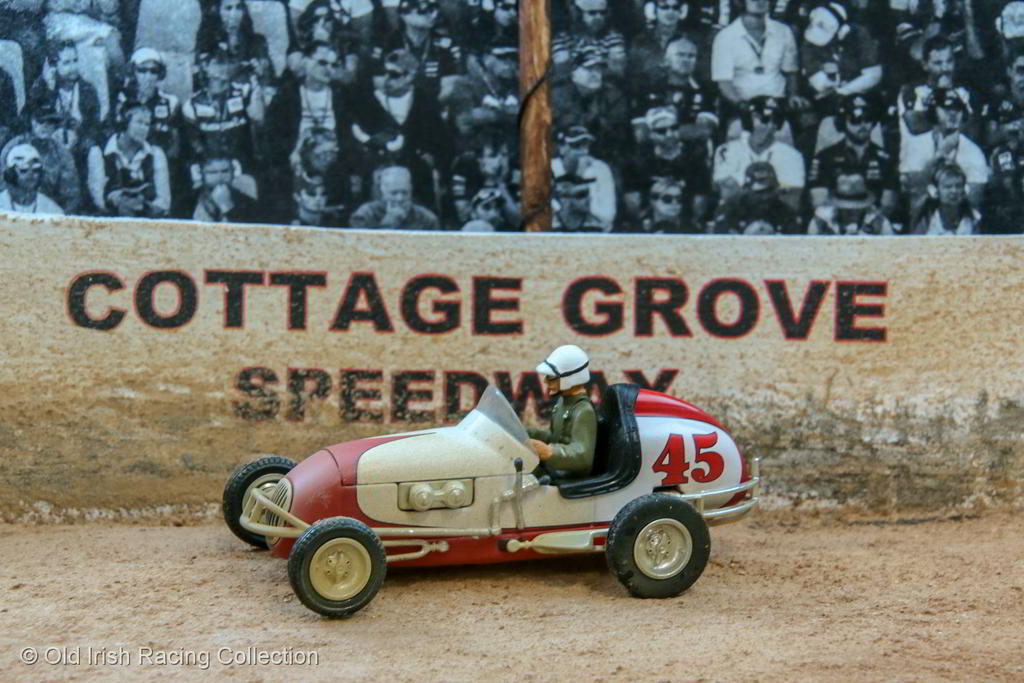 After the second world war, returning GIs were anxious to return to as much as a normal life as they could muster. For many, that meant picking up the pieces of their car dreams and for many that was climbing back behind the wheel of a small open wheel race car. Midget racing began in the 1930’s, but it wasn’t till after the war that interest as well as the building of new small dirt tracks took off. That interest was spurred by the union of the small overhead cam four-cylinder engine created by Frank Offenhauser and Henry Miller was put in the chassis of the small racer built by Frank Kurtis. By 1950, Kurtis-Kraft midgets with Offy engines were the unbeatable (usually) package for these little versions of the bigger cars running at the Indy 500. 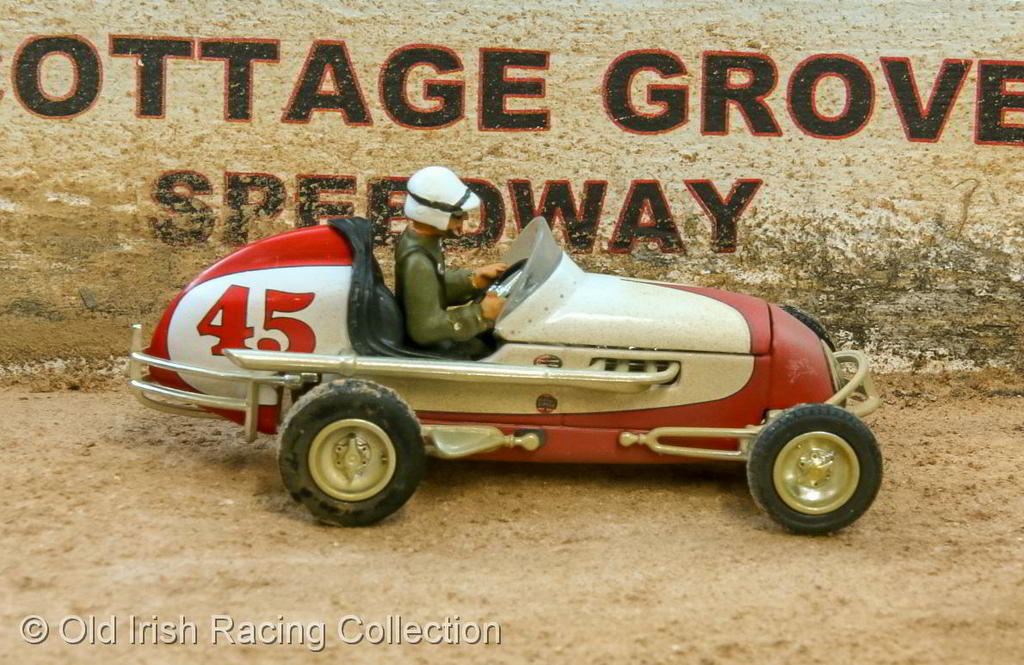 Bill Vukovick, Sr. who went on to win the Indy 500 in 1953 & 1954, was driving a Kurtis-Offy midget racer for Fred Gerhardt on the West Coast in 1950. Vukovich driving for the Edelbrock racing team had won the United Midget Assoc. (UMA) Championship in 1945 & 46. Driving the Gearhart Special seen here, he would go on to win the 1950 AAA National Midget Championship. Racing mostly in S. California, Vukovich became one of the most successful USAC Indy Car racers of all time and is often named as one of the greatest American drivers of all time. Unfortunately, while leading the Indy 500 in 1955 on his way to a third consecutive win he died behind the wheel of his Kurtis-Offy roadster trying to avoid a crash ahead of him. Kurtis Kraft- Offenhauser - 1950 Gilmore Stadium, Walt Faulkner - GMP

Walt Faulkner was known as the “Little Dynamo” due to his energy and small stature. He won the California based UMA Midget Championship in 1941 and picked up after WWII where he left off, having great success in midget racing in cars like this Kurtis-Offy he drove for Leonard Faas in 1950. However, that year his time was split between midget racing and AAA Champ and USAC stock cars. Faulkner set the pole at the Indy 500 as a rookie in 1950 and again in 1951. He finished second in the AAA Championship points in 1950 and 3rd in 1951. He raced at Indy until 1955, where he scored his best finish of 5th. Sadly, he was killed at the wheel of his USAC stock car in 1956. 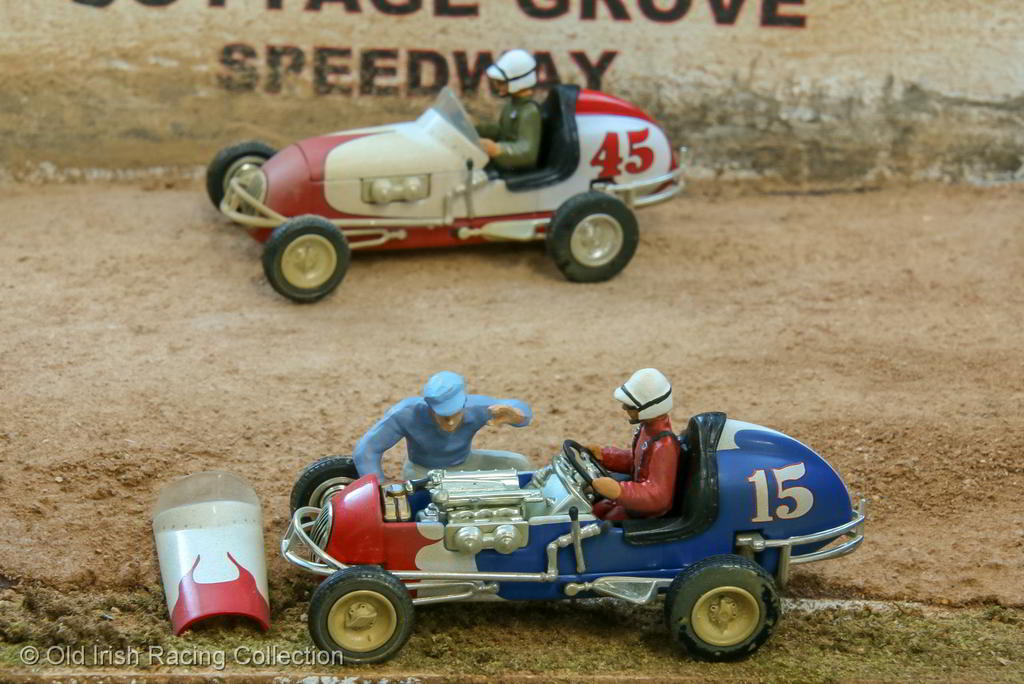 Frank Kurtis made over 550 ready to run midgets and another 600 kits. All his built cars were powered by the 110 Cu. In. (1.86L) DOHC four-cylinder engine, which turned out 175 HP. Light, durable cars with great handling and throttle response made them virtually unbeatable. The National Midget Auto Racing Hall of Fame describes the combination as "virtually unbeatable for over twenty years" (1950-70). Kurtis sold thr midget business in the mid-50’s to concentrate on Indy car racing and sports car building. Kurtis cars won the Indy 500 for eleven consecutive year from 1950-1960, making Frank Kurtis and Kurtis-Kraft great legends of American racing. Kurtis Kraft - Ford V8 60 - 1950 Gilmore Stadium, Roger Ward - GMP
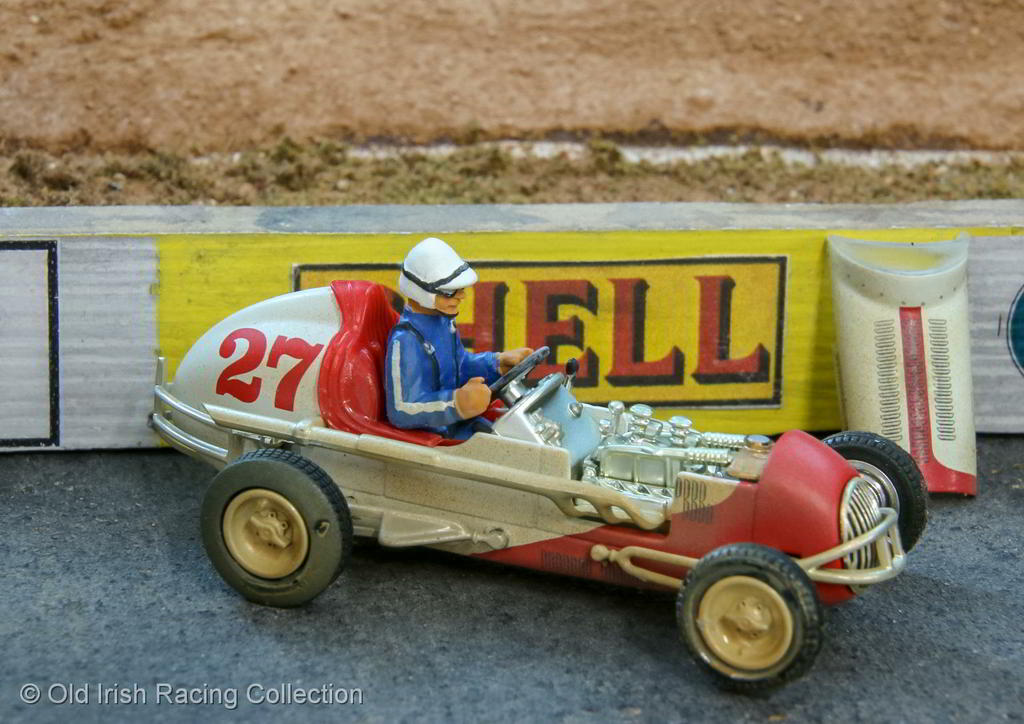 Roger Ward was a great American racer that came onto the racing scene after his service as a P-38 Lightning pilot in WWII finished. Beginning on a small dirt track in Wichita Falls, TX in 1946, by 1949 Ward was winning most of the midget races he entered. In 1950, he joined Vic Edelbrocks team and raced a Kurtis-Kraft powered by a Ford 60 “Shaker” V8. At win at Gilmore Stadium in this car broke Offys record of wins. Ward would go on to run AAA/USAC Champ and Stock cars. He won the stock car championship in 1951 and The Champ car championship in 1959 & 1962. Those years were also the years he won the Indy 500. Ward is credited with the creation of the tri-oval, which he patterned after three of his favorite corners at Indy, Trenton and Milwaukie. He retired in 1966 when he no longer felt he could be competitive. At that time, he had scored 26 major wins in 150 starts. 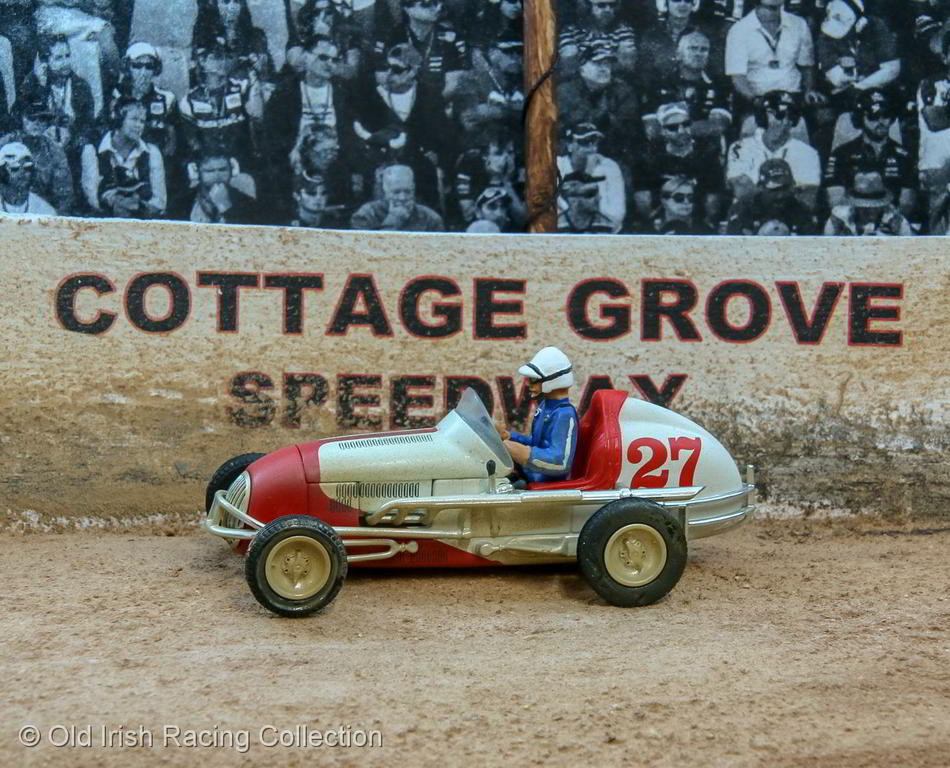 Midget racing was big in S. California and no place was as big a venue as Gilmore Stadium in Los Angeles from when it opened in 1933 until it closed to racing in 1950. During that time it held some of the largest, most prestigious races in the country; featuring some of the largest purses and the countrys best drivers. It was on this stage that Roger Ward shocked the midget car world by winning in August 1950, a feature race at Gilmore driving a Ford powered car. It was not the only time Ward shocked the racing world. In 1959, he won a Formula Libre race at Lime Rock Park driving a midget against much more powerful machinery, proving the versatility of the midgets. He also entered the 1959 US Grand Prix in a midget. While he didn’t have the pace, he did have the pluck and ultimately retired from the race. 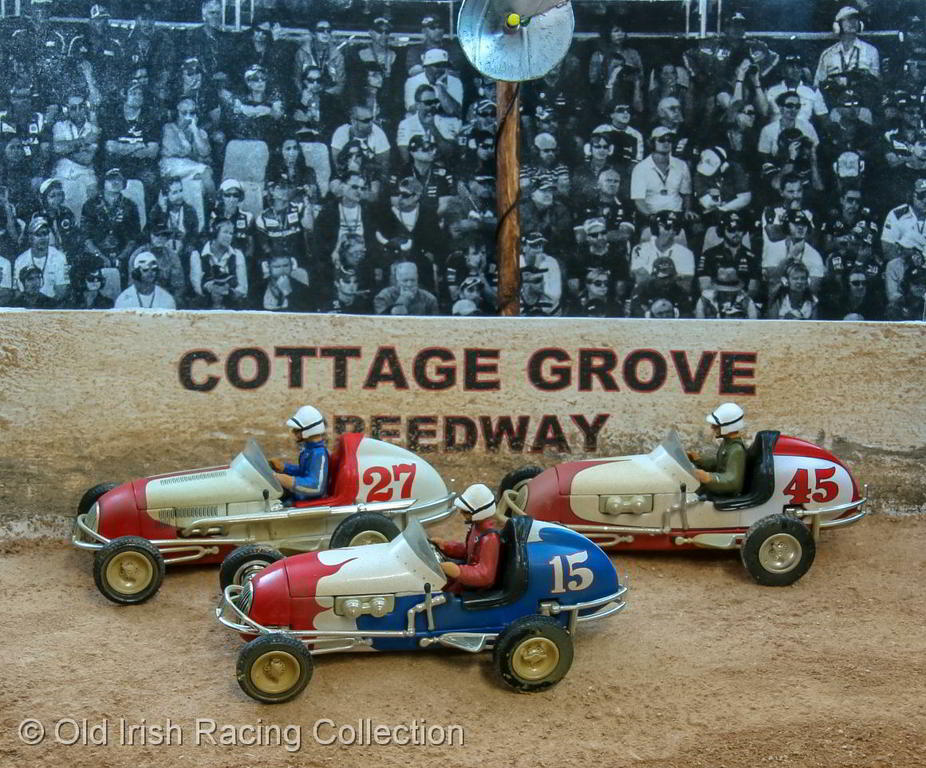 I know that clay (dirt) track racing is popular in Australia and New Zealand and perhaps other parts of the world as well, but its roots are here in small town America. We hear the cars on the track near us running most late spring and summer weekend nights. Even though we live miles away from the track, on still summer nights you could swear they were running just on the other side of our back garden. Whenever I start to get annoyed by the din, I try to remember that for decades that has been the sound here of dreams and ambitions to run bigger cars, on bigger tracks and in front of bigger fans far away from the confines of this small town. However, there are no fans more appreciative of their efforts then the ones currently dodging dirt clods as they power their way around our small track, putting on a show that never gets old. This is an homage to our local speedway.
|
|
|
|
Post by reeft1 on Jul 18, 2022 11:43:32 GMT -5
Wouldn’t be scary driving one of those at all……
|
|
|
|
Post by Tom on Jul 18, 2022 14:33:21 GMT -5
That would be exciting to watch. As usual, great dioramas that tell a story.
|
|
|
|
Post by Alfaholic on Jul 18, 2022 20:42:12 GMT -5
Not my cup of tea at all, but the models are cheeky little fellas. I don't know why the drivers are wearing crash helmets, driving these vehicles they can't have too many brain cells to protect  . The noise versus residents thing is an interesting one. The closest race track to me, a 45min drive away, is facing the same problems. The council have just placed additional noise restrictions on the track, following complaints from property owners (even though the track has been there for 28 years) that will seriously affect its ongoing viability. Most race meeting are club events, including historic racing that I enjoy, but it does host a round of the Australian Superbike Championship. Similar to most smaller venues, the track derives most of its income from track days, corporate events, etc. and is in use most days of the year. Any potential reduction in this type of use could cause the track to close. This would mean we only have 2 tracks in the State of NSW, Sydney Motorsports Park and Bathurst, which is a public road course that can only be used for a few days a year! |
|
|
|
Post by alex on Jul 18, 2022 23:24:43 GMT -5
Just to clarify: Sprint cars and midgets are two different animals that evolved simultaneously. There were often sprints and midgets on the same show (often with the same drivers). Sprint cars ran on dirt and paved ovals an the occasional hill climb and the races counted towards the USAC National Championship. They evolved into the modern sprint cars that are racing at places like Williams Grove and Knoxville today. Midgets were a separate show with their own championship.
|
|
|
|
Post by jager on Jul 19, 2022 2:53:14 GMT -5
My love of motorsport started when I was very young with Saturday morning replays on TV of the local sprint car races held the night before. Like Alex, my memory was sprint cars were bigger and more powerful than the midgets, with the midgets being the feeder series to the bigger cars.
You mentioned this was a piece you did for your son but you didn't say why. Did he race midgets at one time ?
|
|
|
|
Post by JSB33 on Jul 19, 2022 4:21:12 GMT -5
Beautiful work once again, very impressive attention to detail.
Love the Midgets and any form of open wheel short track racing. It is and was my regular stop for racing, I went a few weeks ago and hopefully will be going in a couple weeks. I grew up riding around the Midwest with my Neighbor who campaigned a pavement midget for many years. His son is continuing the tradition by running a couple pavement Supermodifieds and at last look was leading the points for the national series.
As Alex mentioned, Midgets and Sprints are 2 different animals, Midgets are smaller (hence, the name) and run a 4cyl engine mainly on tracks that are 1/4-3/8 of a mile. The sprint look very much the same but are bigger and run V8s. Their most likely to be seen on fast 1/2 mile ovals. To confuse the issue even more, there is an even bigger car that still has te same look, it has the same running gear as the Sprint car with the exception of having an on board starter and a clutch. These are known as Championship cars and they are best suited to the 1 miles dirt ovals. This car blurs the line from when the Indy cars were nothing but stretched sprint car. As the modern Indy car evolved, there was still a need to have cars for the Mile dirt tracks and these tracks were still part of the National title series into the late 60-s.
|
|
oldirish33
Member
"All Jaguars run on Guinness!"
Posts: 3,352
|
Post by oldirish33 on Jul 19, 2022 10:49:33 GMT -5
Wouldn’t be scary driving one of those at all…… Scary perhaps at first (with no one else of the track), but once you learn to steer with the throttle, I think it would be a gas! Scary would come when you hit a rut, or someone else's wheel and become airborne. It would have been a tight squeeze to get the big balls you need to race these into that small cockpit.  That would be exciting to watch. As usual, great dioramas that tell a story. Thanks Tom! While we don't see anything this small anymore, the other open wheel cars especially are a great deal of fun to watch. Not my cup of tea at all, but the models are cheeky little fellas. I don't know why the drivers are wearing crash helmets, driving these vehicles they can't have too many brain cells to protect  . The noise versus residents thing is an interesting one. The closest race track to me, a 45min drive away, is facing the same problems. The council have just placed additional noise restrictions on the track, following complaints from property owners (even though the track has been there for 28 years) that will seriously affect its ongoing viability. Most race meeting are club events, including historic racing that I enjoy, but it does host a round of the Australian Superbike Championship. Similar to most smaller venues, the track derives most of its income from track days, corporate events, etc. and is in use most days of the year. Any potential reduction in this type of use could cause the track to close. This would mean we only have 2 tracks in the State of NSW, Sydney Motorsports Park and Bathurst, which is a public road course that can only be used for a few days a year! I thought they were neat looking and were very reasonably priced. I'm surprised no one has picked up on two big errors GMP made on these cars. First, the driving helmets are too modern for 1950. Second, they didn't wear seatbelts. Theory was that if your started to crash and roll, it was better to be thrown clear of the car, your odds of survival were better. The noise issue is impacting race tracks all around the world as housing developments start to butt right up to long existing race tracks. Closer to home two major circuits are under threat from the noise police, both Portland and Seattle (Kent for you Trans Am and Can Am fans). Portland is in a city owned park. Fortunately it makes enough money to not only support itself, but contribute towards upkeep maintenance and acquisition of other city parks. So far, that has been the key for holding a very vocal and politically connected neighbors association at bay for now, but not without major concessions on noise limits which are starting to impact the viability and ability to attract big events like Indy Car and Trans Am. Just to clarify: Sprint cars and midgets are two different animals that evolved simultaneously. There were often sprints and midgets on the same show (often with the same drivers). Sprint cars ran on dirt and paved ovals an the occasional hill climb and the races counted towards the USAC National Championship. They evolved into the modern sprint cars that are racing at places like Williams Grove and Knoxville today. Midgets were a separate show with their own championship. My love of motorsport started when I was very young with Saturday morning replays on TV of the local sprint car races held the night before. Like Alex, my memory was sprint cars were bigger and more powerful than the midgets, with the midgets being the feeder series to the bigger cars. You mentioned this was a piece you did for your son but you didn't say why. Did he race midgets at one time ? Beautiful work once again, very impressive attention to detail. Love the Midgets and any form of open wheel short track racing. It is and was my regular stop for racing, I went a few weeks ago and hopefully will be going in a couple weeks. I grew up riding around the Midwest with my Neighbor who campaigned a pavement midget for many years. His son is continuing the tradition by running a couple pavement Supermodifieds and at last look was leading the points for the national series. As Alex mentioned, Midgets and Sprints are 2 different animals, Midgets are smaller (hence, the name) and run a 4cyl engine mainly on tracks that are 1/4-3/8 of a mile. The sprint look very much the same but are bigger and run V8s. Their most likely to be seen on fast 1/2 mile ovals. To confuse the issue even more, there is an even bigger car that still has te same look, it has the same running gear as the Sprint car with the exception of having an on board starter and a clutch. These are known as Championship cars and they are best suited to the 1 miles dirt ovals. This car blurs the line from when the Indy cars were nothing but stretched sprint car. As the modern Indy car evolved, there was still a need to have cars for the Mile dirt tracks and these tracks were still part of the National title series into the late 60-s. Thanks for your compliment Jeff, it was a fun challenge to make a banked dirt surface, a curved wall and making it look like it had been well used. I am giving it to my son Ian because he likes coming down to the races and takes me along once in awhile. I plan to make more small dioramas about this size and gift them to friends. I'm certainly no expert when it comes to the different classes of cars that run here. I said sprint more as a generic term because something in what I read doing research for this said that the term midget car was no longer used. The 1/4 mile banked clay oval we have locally hosts several different classes of sprint cars, limited, winged, wingless, 360, which I know are al different and I would not be able to tell you other than maybe winged, which was which. They also race IMCA modifieds, sport modifieds, street stocks, sport compacts and hardtops, which I know are different than sprint cars. Its fun to watch the bigger cars on the small track. The only thing the approximate size or smaller than midgets are the dwarf cars and of course the winged go karts (those both look like fun!) I know that both the World of Outlaws used to make stops here and there is a Western sprint car series that makes one or two stops during the season. If midgets aren't called sprints, do they still race them in other parts of the world? |
|
oldirish33
Member
"All Jaguars run on Guinness!"
Posts: 3,352
|
Post by oldirish33 on Jul 24, 2022 13:47:14 GMT -5
More Milanese Magic - This is one of the two Alfa Romeo handbuilts GPM had left on sale by the time I saw their announcement, so jumped on them and this one in particular, to increase my 1930's Alfa collection (sorry Martin, but I didn't see the ad for a couple days either.)  This is a beautiful Italian which need little in the way of introduction for most. 1936 Alfa Romeo 8C 2900A Touring Spider - FB Modelli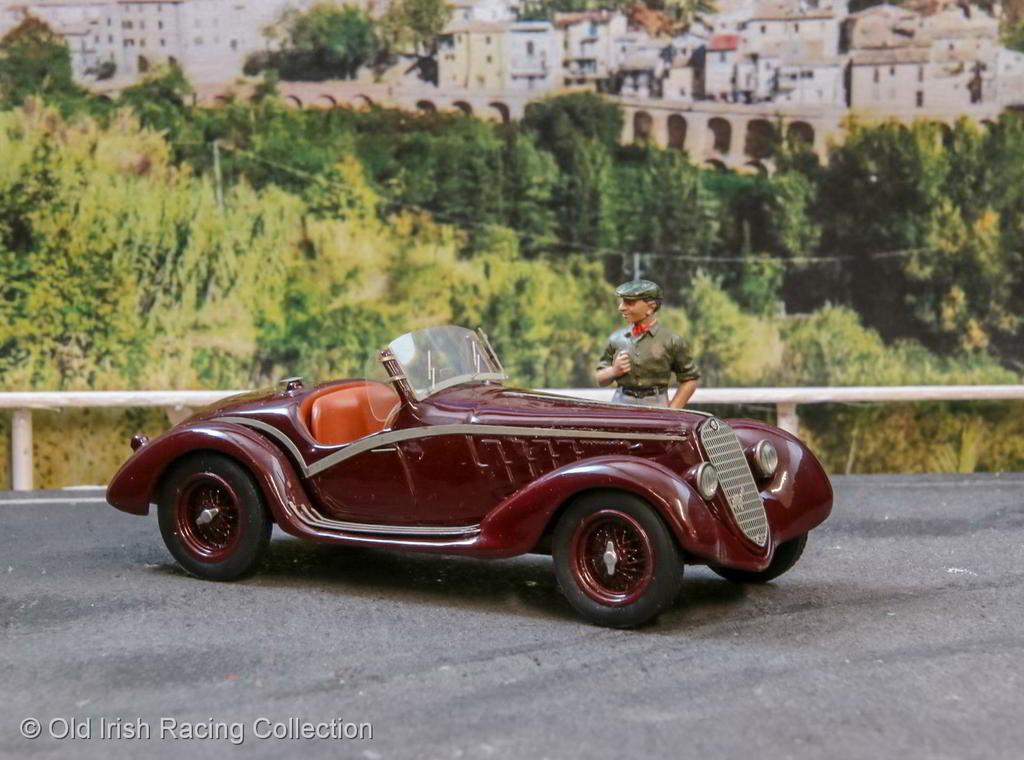 The 8C designates 8 cylinders, and the 2900 designates the 2.9L straight-eight, twin supercharged engine which powered the top of the line touring cars Alfa Romeo produced beginning in 1935. It used a de-tuned Grand Prix engine, which produced 220 BHP, a substantial figure for its day. The 8C 2900 was originally designed to compete in sports car races, the Mille Miglia in particular. The first 2900A was introduced at the London Motor Show in 1935 and Alfa Romeo produced nine more 2900A chassis (five in 1935 and five in 1936), which were sent to various coachbuilders for custom body work. This car features a two-seat spider body by Touring in the traditional deep red (maroon) Alfa Romeo racing color of the day. 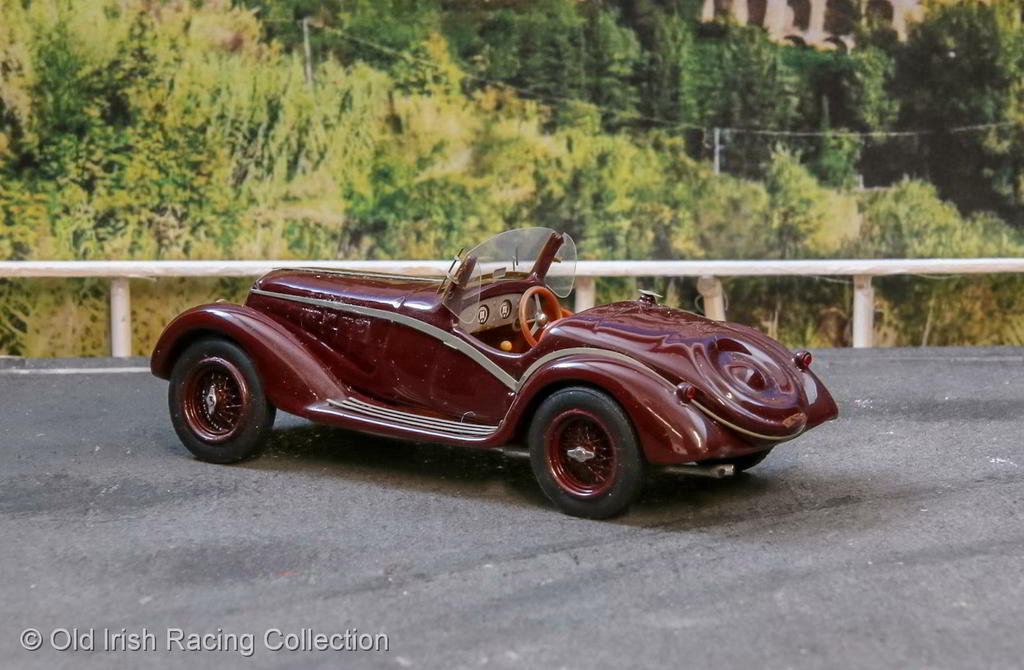
|
|
|
|
Post by Tom on Jul 24, 2022 14:52:10 GMT -5
That is beautiful. Stunning car and model!
|
|
|
|
Post by DeadCanDanceR on Jul 24, 2022 18:45:34 GMT -5
Very nice, indeed!  |
|